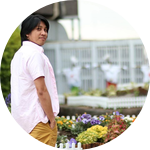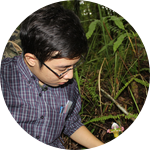About This Project
A preliminary result from last week's exploration revealed a number of species from the family Orchidaceae that haven't recurred to the scientific literature for almost a century. To further update the scientific records, it is imperative to conduct a thorough exploration to publish results that can be used in conservation studies. Finally, remaining population of P. acmodontum will be documented for its conservation and observation biology studies.
Ask the Scientists
Join The DiscussionWhat is the context of this research?
The Negros Island is situated at the very middle of the Philippines. It boasts natural flora and fauna that is unique to the Island. More than one hundred years ago, the Island attracted people of different background and disciplines. They discovered a lot of species from this Island and published scientific articles about their findings. Those people are also responsible for agricultural revolution that lifted the economic status of the island and still thrives to this day. That agricultural and economic revolution is the very reason why a number of species are now threatened by extinction. We cannot take back what has already been lost, but we can save and conserve the wonders that we still have today.
What is the significance of this project?
'Rediscovering the Orchid Species of Negros' is a great way to initiate conservation studies for plant species. The results from this project will be given to a local environmental authority to promote responsible ecotourism and education for the people. This will also serve as a baseline model to establish an effective and efficient conservation programs for other species. Finally, this project aimed to develop the Philippine Orchid Industry as sustainable resource and livelihood of the Filipino People of all generations.
What are the goals of the project?
The first step of the project is to survey different populations of orchids. Once we have determined their location, documentation of their habitat and environmental parameters will be taken. This documentation is vital to mimic their environment ex situ.
The exploration will be taken place in three separate natural parks situated in north, center, and south of the Negros Island for 12 months on every first weekend of the particular month to observe the phenology of the different Orchid species.
Meanwhile in the lab, a thorough review and investigation will be taken place in order to determine whether the collected specimen is a new species or a rediscovered species. In the case of a new species, an electronic raffle will be made to honor the specific epithet after the backer.
Budget
The most important part of the exploration is the proper documentation of the samples collected in the field. The Imaging & Laboratory Equipment will be used to capture minute details of the samples. That is to provide an excellent resolution for photo-identification to the experts of a particular plant genera. Finally, the images taken from this equipment will be used for publications and printing.
Locals from different natural parks will be trained and given supplies. I decided to have them trained because they know the wild better than anyone else. Since they will be spending a day or two in the field, it is important to provide them a compensation and allowance for their exploration.
Basic necessities like transportation and others are also important for the in-site establishment of the lab, since it is imperative to document specimens in fresh state.
Everything that is bought for this exploration will be used for the future conservation studies.
Endorsed by
 Project Timeline
Project Timeline
Stage 1 of the timeline will be dedicated to the preparation of Research and Collection Permit from the local environmental authorities. Meanwhile, a survey will be done to assess the area of exploration for the whole year. It is decided to have the study done for a year since different species have different phenology.
Stage 2 will be dedicated for the official field work and gathering of data.
Stage 3 is for the processing of data and publication of results.
Jun 13, 2017
Stage 1: Project Launch
Jun 15, 2017
Project Launched
Aug 01, 2017
Stage 1: Field Survey and Training
Aug 19, 2017
Stage 2: Official Field Work
Aug 25, 2018
Stage 2: End of Field Work
Meet the Team
Patrick Sodusta
I am always fascinated by nature and its ability to provide and to fulfill the needs of humanity. However, It is us humans who are not contented of what we already have and we are slowly destroying our very source of life. To save what has remained, I full-heartedly dedicate myself to the study of nature. This not just a mission of discovery, but also for providing data to the scientific community to establish an efficient and responsible conservation.
Because of my sincerest dedication to the conservation and study of nature, I became part of several conservation studies after my graduation from college (2016). I am part of research on Lepidoptera funded by National Geographic Society. I also volunteered on a continuous behavioral study on Irrawaddy Dolphins that is still continuing up to today. My latest work is a research assistant to a year-long project on ethnobotany by DOST-PCHRD.
I hope I can continue my research endeavors to study nature as always.
My profile picture shows my field routine with Paphiopedilum acmodontum, an endangered terrestrial orchid that is endemic to our island. There are very few of them left in the wild.
Jasmin Binder
Greetings Orchid Lovers,
To introduce ourselfes, we are Jasmin Binder 27 and Hans Weber 34 years old and we Love orchids. In Germany we are Specialized in growing and Selling Hardy and tropical orchids, with Main interest in Cypripedium / Lady slipper species. We are Happy to join Patrick Sodusta in his great project to rediscover the Native orchids at Negros Island, his home Island in Philippines. We will assist him in situ and in plant descriptions as Good as we can.
Project Backers
- 1Backers
- 1%Funded
- $5Total Donations
- $5.00Average Donation


